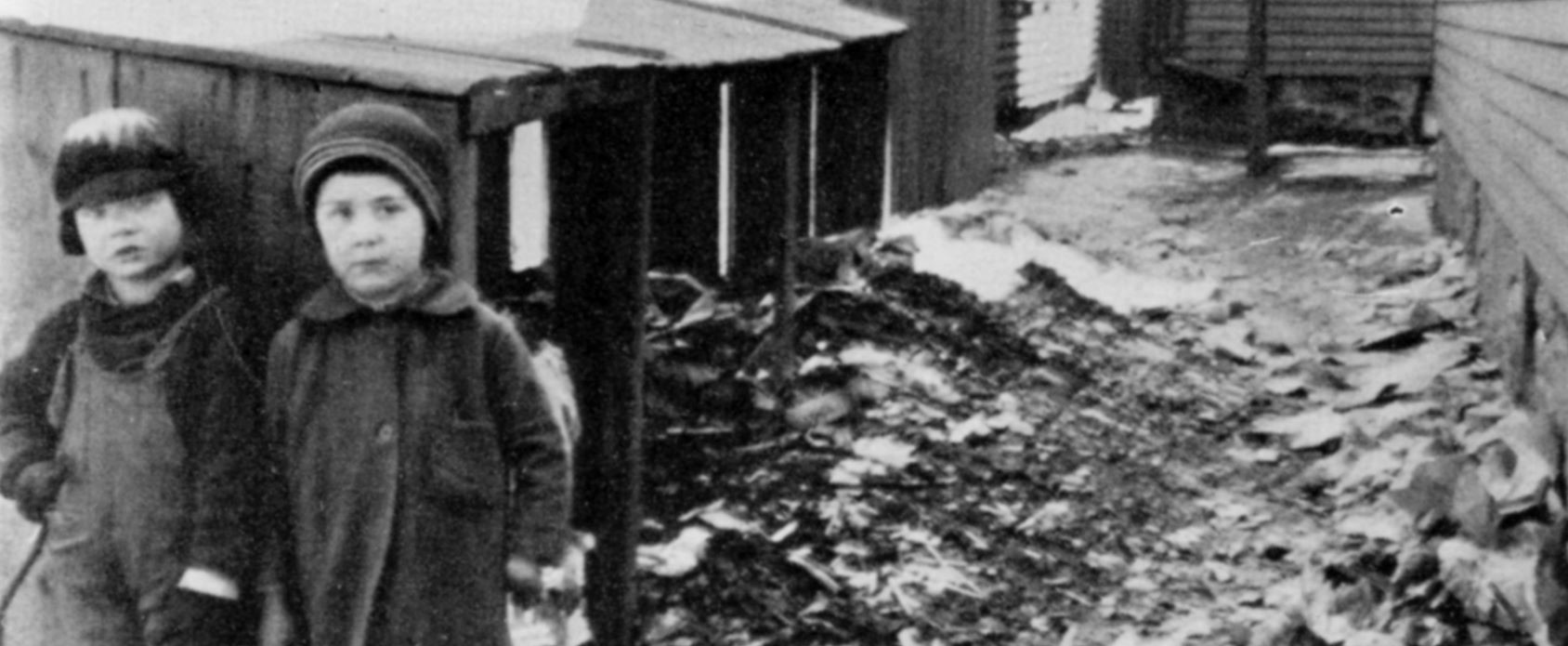
Years ago, kids used the alleys to play “glassies.” The ragman’s horse and wagon clattered down the alley as he called out “Ah-r-raigs.” Residents protected the produce of their backyard vegetable gardens by erecting fences constructed of an eclectic mixture of wooden boards. Utility poles located in the alleys were handy for attaching one end of a laundry line, the other end secured from a back window, allowing cascades of clothes to wave and flap from each level of the triple-deckers. Alleys could also be nuisances, collecting trash and attracting illicit activities.
Though they seem somewhat mysterious today, the alleys were straightforward enough in their origins. Charles Storrow, chief engineer of the Essex Company, incorporated them into the original layout of North Lawrence streets and building lots from 1846 on. They were normally 14 feet wide and were useful in maximizing the capacity of a block of buildings by causing them to be built back to back while permitting access to the rear for cleaning cesspools, making deliveries, and performing other utilitarian tasks.
“Who owns the alleys?” The Essex Company bought virtually all of the land that later made up Lawrence. Yet records indicate that they subsequently sold lots to the nearest side of what they referred to as the passageway. This would suggest that the Essex Company continued to own the alleys. There is no record, however, that either the Essex Company or the City considered them taxable. The alleys never appear on the tax assessment maps or on lists of taxable property prepared by the Essex Company. Through the years, people used the alleys freely, as if they were public rights of way. The City Documents frequently record activity suggesting they were public, including running sewers through them, paving, cleaning, or even naming them as streets. On the other hand, there are records that the Essex Company actually sold alleys to the City or to individuals, as in 1906 to Michael and Mary Fleming, the passageway between Parker and Market Streets.
Nearly final resolution, at least with respect to the center of Lawrence, seems to have occurred during the Urban Renewal process 1959-71. The Essex Company during that period deeded all remaining land between Broadway and Lawrence Streets to the Lawrence Redevelopment Authority or Essex County, specifying passageways, a clear acknowledgement of ownership. The status of the few alleys west of Broadway remains murky
Does this matter today? Well, the question keeps coming up. When individuals or organizations wish to improve their property, they often wonder whether they can incorporate the alley into their plans. Who owns the alleys? By this time, any that have not been formally absorbed by the City or abutters have certainly become public ways through habitual use.